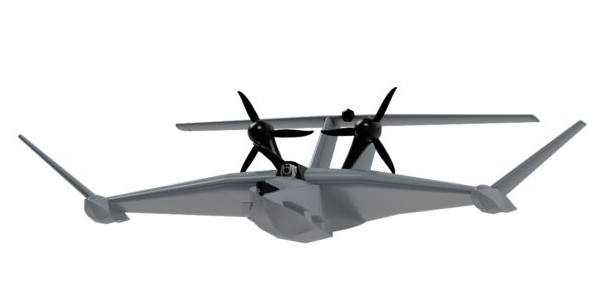Türkiye fields a production‑ready wing‑in‑ground (WIG) maritime UAV that flies inside the radar horizon—and rewrites littoral strike math.

Turkey’s TALAY—described by its developer Solid Aero as the world’s first production‑ready sea‑skimming multipurpose UAV—blends the aerodynamic efficiency of a wing‑in‑ground (WIG) craft with the signature management of a low‑flying drone. The result is a new class of maritime strike and ISR platform designed to operate where radar sees least: the lowest tens of centimeters above the sea. [1]
Key Facts
- Concept: Sea‑skimming, WIG effect UAV for maritime strike/ISR—below typical radar horizons (≈0.3–100 m ASL).
- Performance: ~200 km/h max speed; ~3 h endurance; ~200 km range; payload up to 30 kg; MTOW ~60 kg; electric propulsion.
- Features: Foldable wings for rapid deployment; AI‑assisted flight control; operations up to sea state three; day/night mission modes.
- Status: Publicly shown at IDEF 2025 in Istanbul; manufacturer markets the platform as production‑ready. Serial production claimed to start Oct 2026 with first deliveries in early 2027. [2][3]
Why a sea‑skimming WIG combat drone matters
Operating inside the radar horizon compresses an adversary’s warning time. A target’s surface search radar, already challenged by sea clutter and ducting, sees little below a few meters—especially against low‑RCS objects moving fast within the wave layer. TALAY’s sea‑hugging profile exploits those physics, approaching from 30 cm to 100 m above sea level and popping for terminal maneuvers only when needed. This is the core advantage of a sea‑skimming WIG combat drone—it flies where defenses are least efficient. [1]
Production‑ready—and shown at IDEF 2025
Solid Aero positions TALAY as a production‑ready system with foldable wings for rapid launch, modular payloads and autonomous or operator‑in‑the‑loop control. The company unveiled the platform internationally at the International Defense Industry Fair (IDEF 2025) in Istanbul—Türkiye’s flagship defence event—where it was displayed alongside other indigenous uncrewed systems. [1][2]
Specs translated into missions
On paper, TALAY’s 30 kg payload, ~200 km range and ~3 hour endurance point to multi‑role use cases: harbor interdiction, coastal reconnaissance, picket‑line probing, and rapid attritable strike against lightly defended patrol craft or port infrastructure. An electric powertrain paired with a lightweight, low‑observable planform favors quiet approach and low thermal/IR signature. Advanced, AI‑assisted flight control is intended to stabilize WIG operations in sea state three and support day/night mission sets. [1][4]
While its warload is modest compared to heavyweight anti‑ship missiles, massed use can flip the cost‑exchange. Swarms of sea‑skimming WIG combat drone units stress shipboard sensors and interceptors, forcing defenders to spend expensive effectors (or expose soft‑kill gaps) against low‑cost attackers. The platform’s agility and small radar cross‑section magnify that asymmetry.
From the Caspian Sea Monster to TALAY
WIG craft aren’t new: the Soviet KM “Caspian Sea Monster” proved the lift and speed advantages of ground‑effect decades ago. TALAY refines that principle at miniature scale. By shrinking the airframe, adopting electric propulsion and adding autonomy, Turkey shifts a Cold War idea into an attritable, unmanned format suitable for modern littoral warfare. [1]
How it stacks against other powers’ concepts
Other militaries are exploring low‑altitude maritime platforms, but most remain experimental. In the United States, DARPA wrapped the Liberty Lifter effort in June 2025 and shifted its outputs to industry rather than building a demonstrator—signaling that the technology base will likely reappear via other programs rather than as a government‑led X‑plane. [5][6]
China and Russia continue to float concepts and hints of patrol or missile‑launch variants, and several European and Australian efforts focus on logistics or SAR roles. What differentiates TALAY today is its public, production‑oriented posture and live demonstrations in Türkiye’s defence trade‑show circuit. [2]
Industrial and operational implications for Türkiye
TALAY fits Türkiye’s wider push to harden coastal defense and expand indigenous uncrewed maritime capabilities. If the serial‑production timeline reported in open sources—October 2026 line start; first Turkish Navy deliveries in early 2027—holds, the program could seed doctrine for sea‑denial screens around critical straits, ports and archipelagic chokepoints. [3]
Analyst’s view: The platform’s decisive value will come from scale and systems integration. A handful of units is a novelty; dozens networked with coastal sensors, SATCOM/line‑of‑sight control, and layered electronic warfare make a coercive littoral shield.
What to watch next
Three milestones will show whether TALAY translates promise into operational advantage: (1) verified sea‑state performance and autonomous recovery in adverse conditions; (2) proof of cooperative swarm behaviors across multiple platforms and control nodes; (3) validated kill‑chains against moving maritime targets using modular, export‑compliant payloads. If those arrive on schedule, Türkiye will have defined a new survivable layer for coastal warfare—one that complicates every surface commander’s calculus.
Internal & External Links
For broader context on uncrewed systems shaping naval warfare, see our DSEI coverage on emerging attritable drones and maritime ISR. [7]
References
- Solid Aero — TALAY product page (specs/claims)
- Hürriyet Daily News — TALAY shown at IDEF 2025
- Greek Reporter — Production timeline (Oct 2026 / early 2027)
- Interesting Engineering — Endurance, range, sea‑state notes
- DARPA — Liberty Lifter program status
- Defense News — Liberty Lifter concluded in June 2025
- Defence Agenda — DSEI 2025 post‑show analysis (internal)
- UAS Vision — Turkey Unveils Stealthy, Production‑Ready Sea‑Skimming WIG Combat Drone
Further Reading
- DARPA’s Liberty Lifter: ground‑effect logistics concepts
- Defense News — What’s next after Liberty Lifter
- Army Recognition — TALAY overview and video
- Interesting Engineering — Sea‑skimming drone explainer







